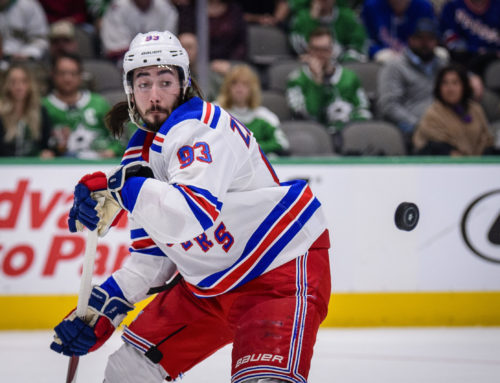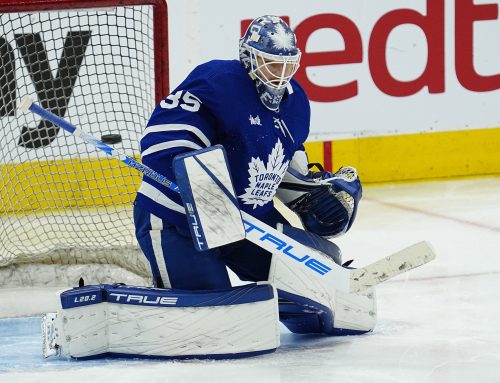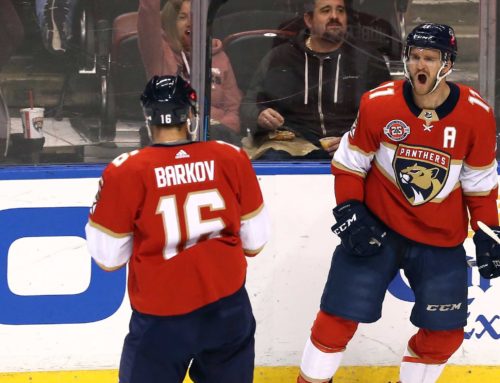The Realignment Effect (East)
Tim Lucarelli
2011-12-12

Although it still needs to be approved by the NHLPA, it looks as though the NHL realignment is just about finalized for the 2012-13 season. My good buddy Rhys Richards from The Hockey Guys posted a great read on how this affects the NHL, in particular the Detroit Red Wings. With the new schedule in mind, I decided to take a look at how the goaltenders of the former Eastern Conference will be affected.
To start with, I pulled data from the standings of the 2009-10, 2010-11, and 2011-12 (current) seasons and separated them into three tiers (1-10, 11-20, 21-30). The current schedule has teams playing opponents in their own division six times, opponents in opposing divisions but still in the same conference four times, and opponents from the opposing conference once per year. That totals 79 games, and the remaining three games are spread out among various teams in the opposing conference. Rather than checking each team's floating three games, I decided to add one game into each of the tiers just to standardize my data. What does all of that mean? I'll explain shortly. First, I need to point out that the new schedule (with four conferences – no divisions) allows the seven-team conferences to play each of the teams in their conference six times, while playing every other team in the league twice per year. Since both of the "Eastern" conferences follow the seven-team format, I won't get into the eight-team format.
What I have done below, is calculated for the modern-day Eastern Conference how many games were played against top, middle, and bottom tier teams, and based upon the standings in the current season, how many they will face in 2011-12. What this data shows is that most of the Eastern Conference teams play on average, 26 (32%) of their games against top tier teams, 25 (31%) against middle tier teams, and 31 (37%) against the bottom tier teams. Specifically, Pittsburgh, Philadelphia, and Washington play over 40% of their games in a given season against the bottom 10 teams in the league.

In the new unnamed conferences (I have just expanded the names of the Atlantic and the Northeast), Washington and Carolina are added to the existing Atlantic Division and Florida and Tampa Bay are added to the existing Northeast Division. How exactly does this change the schedule? To find that out, I averaged the final standings ranks for 2009-10, 2010-11, and the current standings position of 2011-12 and determined which teams on average fell into each tier. Take a look at the numbers below.

Now, teams in the "East" will average 27 games played (33%) against top tier teams, 26 (32%) against middle tier teams, and 28 (35%) against the bottom tier teams. Not too intense of a shift, when looking at the totals. On closer review though, the balance has shifted.
The former Atlantic teams, who boast some of the best goalies in the league (Lundqvist, Bryzgalov, Brodeur, Fleury, and the promising Montoya) are now playing more games against tougher teams, most notably Washington, but also seeing the Western teams twice per year instead of just once. In contrast, teams in the Northeast division now have Florida and Tampa Bay in their division, who have on average, been lower tier teams. Florida is certainly changing their fate this year, and it is possible that power will shift in the next couple years, possibly nullifying this data. In the meantime though, it is interesting to look at how the schedules will shift and potentially predict how your goalie's performance may change in the coming year.
While some players are superstars no matter who they are playing against, others may struggle against tougher competition. Just looking at the numbers in this analysis, it appears that goalies like Ryan Miller, Tuukka Rask, Tim Thomas, Carey Price, James Reimer, Jonas Gustavsson, and Craig Anderson statistically may be in a better position to post equally or better stats next year. Conversely, goalies such as Ilya Bryzgalov, Sergei Bobrovsky, Henrik Lundvist, Marc-Andre Fleury, Al Montoya, and whoever is playing in goal for New Jersey may be in for a tougher ride.
Am I saying that Fleury's GAA will shoot up from a 2.23 to a 2.60 or that Tim Thomas' GAA will drop from a 1.92 to a 1.60? Absolutely not. What I am saying is that you may see subtle variation from the statistics you have grown accustomed to seeing in the current schedule. Two people could look at this data and one would want to sell Ilya Bryzgalov citing that he will be seeing tougher opponents and is in for a long season. The other might say that Bryzgalov could look at a slightly higher GAA, but will likely also see a higher save percentage due to seeing more shots from increased matchups with heavy-shooting teams like Washington and Carolina. Each league and situation is different, so whichever actions you decide to make (or not make) always be sure to exercise your own judgment as to how the data applies to your league.
Questions? Comments? Feel free to share your opinion below.





 CAR
CAR NYI
NYI BOS
BOS TOR
TOR VAN
VAN MTL
MTL EDM
EDM WPG
WPG ANA
ANA
